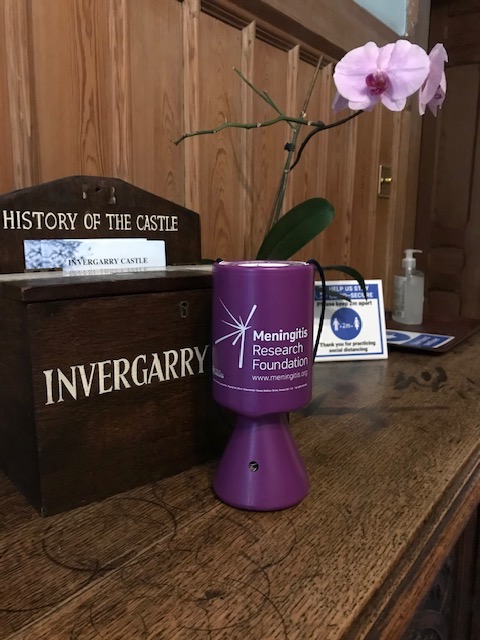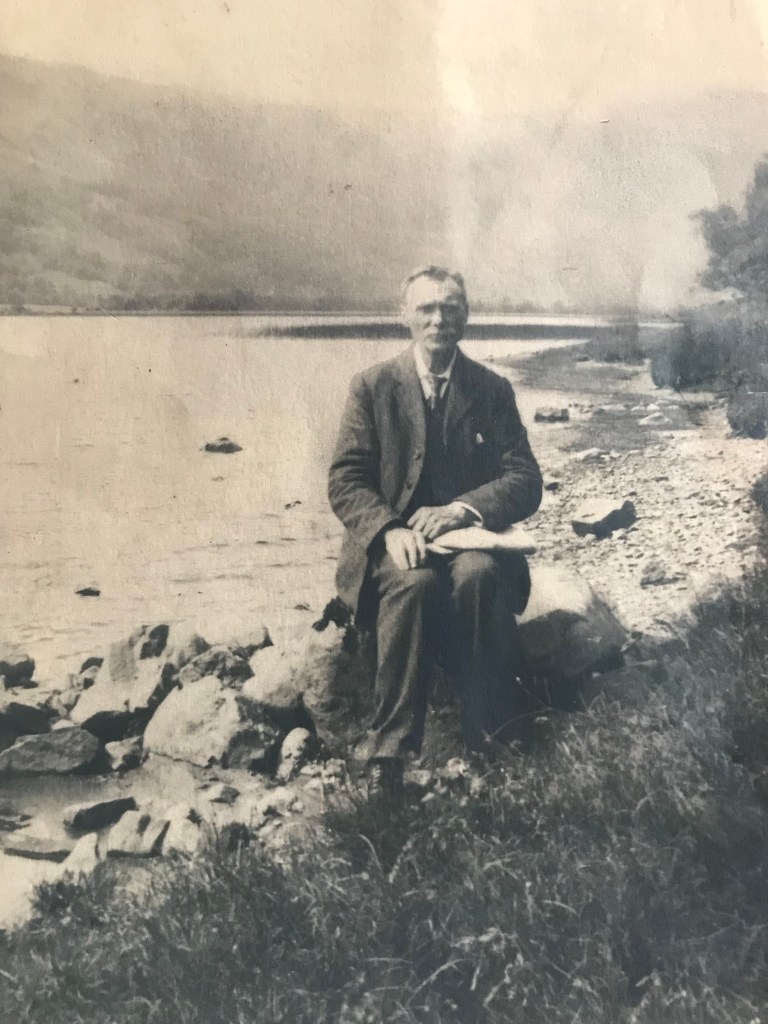Vacation – brought to you by vaccination
In previous lives, my career came with great travel perks. Corporate films meant scouts and on-location shoots around the world. Writing “The Drive: Searching for Lost Memories on the Pan-American Highway” was the vehicle itself for a year-long road trip. I’m a Bruce, as in Robert The (wink wink) who’s always wanted to trace my ancestry in Scotland. But the pandemic clipped my wings. Until now. Thanks to vaccines — plus advances in testing, rigorous contact tracing and a country that truly cares about all vaccine-preventable diseases — I’ve found the spot my great grandfather memorialized almost 100 years ago. So grateful to DNA and mRNA.
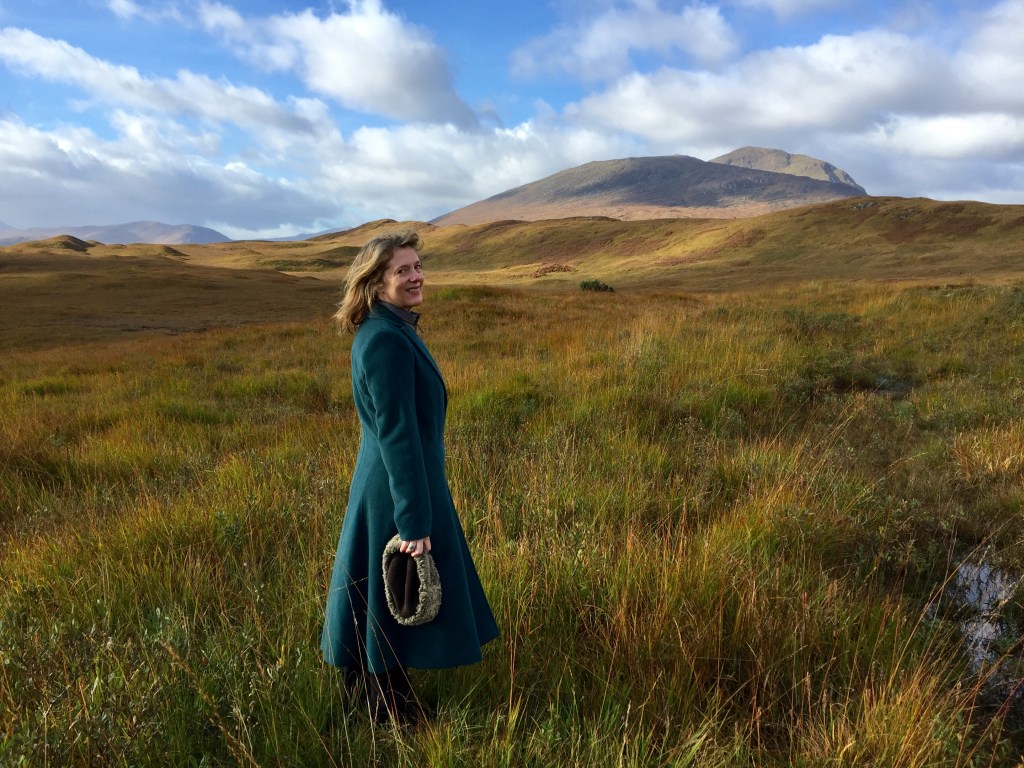



A tourist in my own country


It hasn’t felt right, let alone possible, to travel or write about travel during this pandemic. But today I realized I can do both and never leave the country. Because for the past few years I have felt like a tourist in my own country. Especially in Washington DC — a city I love. I used to feel welcomed, respected and confident here. This is the city that gave a small town TV reporter a chance to grow, learn, reinvent and launch a career that led around the world. Back in the pre-Uber era of taxi drivers, I got homesick hearing Gullah accents from behind the steering wheel — transplants from the South Carolina Low Country who came here for that same chance. I lived through historic moments here – inaugurations and marches and 9/11. I wanted to celebrate another milestone nxt week – watching Kamala Harris take her histori oath of office. But I won’t risk my health or my security after the attack on the capitol last week. So in the few hours left before even more restrictions go into effect, Gary and I walked through this city we know, love and barely recognize.


The emotions fought with each other. Grateful for the National Guard leaving their families and jobs to keep traitors away. Unnerved to be able to stand in the middle of an empty Pennsylvania Avenue. Paranoid to look up into cameras on communications towers that I know are necessary. Angry to see remnants of sedition. Uplifted to read the words of our constitution on the soaring wall of the Newseum. Gutted that instead of peaceful redress of grievances, we are a nation reduced to pushing each others buttons.


I have the sense a new journey is beginning. I’m ready to get moving, or at least writing, again. So that when I do leave this country again, I can bring the outside world a glimpse of another America.
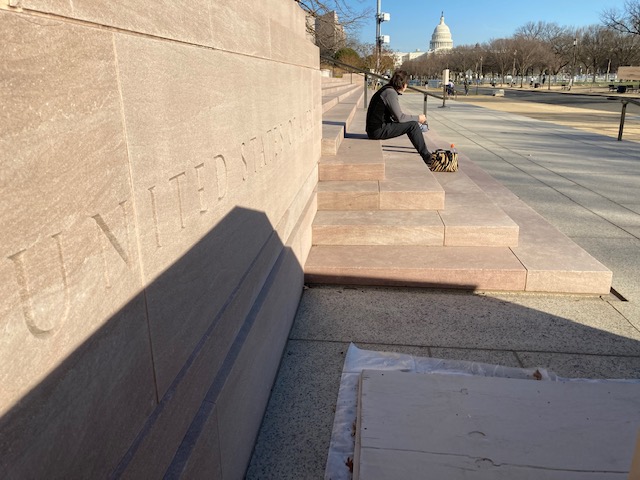
Last roadtrip stop for The Drive: Gaithersburg Book Festival May 19th
I’ve downloaded more than my share of handy travel apps and relied on Siri to talk me to hotels after nighttime car rentals at unfamiliar airports. But for long distance road trips my advice is to unplug.

I did — for almost 20,000 miles. With no GPS, WiFi or backup plan, my drive along the loosely-connected, language-spanning, under-maintained, trans-continental Pan American Highway should have been a disaster. Instead, it turned into a life-changing adventure and reason the Gaithersburg Book Festival picked “The Drive: Searching for Lost Memories on the Pan-American Highway.”

In the single-wide Oregon trailer house where I grew up, maps weren’t for finding treasure. They were the treasure. My father was a long-distance truck driver and a sailor before that. He used maps as wall paper: highlighter-traced and flag-pinned evidence of our family’s nomadic history. Our bookcase stacks of Rand McNally’s and AAA trip tix were as high as our piles of National Geographic magazines: alphabetized and ruler-folded to their original, crisp creases.
Even so, when my husband and I set out in 2003 to drive a vintage truck camper to the end of the Pan-American Highway in Tierra Del Fuego, Argentina I thought we needed technology. I bought the fanciest after-market Garmin and loaded it up with software claiming we would never get lost: from Mexico through Argentina.
But a funny thing happened on the way to the Mexican border in Nogales, Arizona. I realized road trips aren’t about the shortest distance between two points. It’s the journey that matters and nothing is better company than a map.
Screens are instructions where maps are invitations. So I pulled out a rubber-banded stack of maps my father saved from driving this exact route thirty years earlier, when I was a little girl of seven. I smelled the stains of spilled coffee and smiled at the pink, highlighted highways. Wider and wider I opened the faded maps, skipping countries ahead and traveling back in time. The names of towns jumped out in double-Dutch rhymes: Huehuetenango, way-way-to-go and Solala, so-long-ago. No computer-generated voice told me to make a U-turn or recalculate; technology was no longer my task master.

Maps provide a physical sense of direction, time and place that screens can’t. Pinching and stretching pixels isn’t the same as tracing a route with your fingers. When you touch a crinkled map your finger instantly becomes a scale by which to judge distance and estimate time – you measure and calculate the consequences of a detour or whether you’ll arrive in time to catch the sunset.

There’s an art to folding a map but it’s the unfolding that expands horizons. You discover where roads originate and lead. Far-away destinations listed on highway exits suddenly make sense. Beltways around congested cities align with their confusing, ever-changing signage when a circular loop committed to actual paper shows the same road curving East before heading North.

Maps also keep panic at bay when you wind up in an unfamiliar spot. You can physically judge how far off track you are. Finger-figure it out. A half knuckle to the West? That’s only ten miles, twenty minutes if the scenery is worth slowing for. Besides, getting lost becomes a chance for conversations with locals when you pull out a physical map. It’s sharing, old-school. Smooth a map over the hood of a truck and stories tumble out, places worth stopping, amazing fishing holes or haunted neighborhoods.
It’s exhilarating to study a map while the terrain it describes is alive, just outside your window. You rotate, lift and fold the paper until your bearings align with latitude and longitude and you catch up with your internal compass. There’s a satisfaction in being able to predict the next off ramp or tell which direction the river below a bridge is headed.
Reading a map is like discovering another language. It provides context for direct, imperfect human observation. Subtle changes in colors are cartographer’s cues for upcoming topographic transitions. Even the size of dots marking towns and cities is intentional, information to use or discard at your own discretion.
If your map is out of date, even better. Roads, valleys, mountains and turnoffs never disappear – let others circumvent, detour or pay new tolls to get there faster. You will experience the distance between destinations. Maps will become treasured memories.
Teresa Bruce lives in Takoma Park, Maryland. discusses her memoir The Drive: Searching for Lost Memories on the Pan-American Highway along with fellow panelist and author Orly Konig on Saturday May 19th from 3:15pm to 4:05pm at the Rachel Carson Pavillion. Follow her blog at teresabruce.me or visit teresabrucebooks.com
The Oregon trailhead of The Drive: a bookstore event Monday in The Dalles
The Drive’s long book roadshow makes its penultimate stop Monday in a city not far from where the road trip it chronicles began: Klindt’s Booksellers in The Dalles, Oregon. The timing couldn’t be more poignant — the day after I travel to my little brother’s gravesite for a memorial service. On Mother’s Day we will say our goodbyes to Nellie Fox Edwards, laid to rest next to the grandson whose death precipitated the journey that became the book.

The Drive: Searching for Lost Memories on the Pan-American highway has been adopted in Oregon — travel guru Rick Steves dedicated 20 minutes of his radio show/podcast to it this Spring (you can still listen here, it’s the last chunk and an amazing interview). Not one bookclub but FOUR are currently reading it there.
My aunt Ronnell Clift circulating it far and wide, my librarian friends Kent and Nancy Upton making sure libraries carry it, friends sending me rainy pictures of it on their dashboards; Other Mother fans like Sue Ann Arguelles shouting its praises to the independent owners of Klindt’s.

They “get” road trips in Oregon. Not surprising, along the route of Lewis and Clark. Or Cheryl Strayed’s “Wild” that made movie stars of towns along the Columbia River Gorge.

My parents were too grief-stricken to miss Oregon when they drove away from it in 1973. For me — this bookstore event will be a victory lap for the road trip of a lifetime. Fold the maps away; I’m home.

If you’re in The Dalles, Oregon — come to Klindt’s from 5-7pm Monday and I’ll sign your book. Get yours at the store (he’s stocked up) through the buy-the-book links at the bottom of the landing page on my teresabrucebooks.com website or here or here. Planning a road trip? Buy the audiobook here. Like The Drive’s Facebook page and tweet back at me @writerteresa. Like travel anthologies? I’m in a brand new one called Alone Together: Tales of Sisterhood and Solitude in Latin America which you can get here.
The impact of photography on civil rights
 We live in the slack-ivim era of using social media to proclaim convictions while others donate, march, support and defend civil rights in riskier, more tangible ways. The excuse most of us use, myself included, is that there isn’t much one individual can really do. But Jane Hearn’s new book of photography “A Past That Won’t Rest: Images of the Civil Rights Movement,” proves how very much more we each can do. At any age. And in any era.
We live in the slack-ivim era of using social media to proclaim convictions while others donate, march, support and defend civil rights in riskier, more tangible ways. The excuse most of us use, myself included, is that there isn’t much one individual can really do. But Jane Hearn’s new book of photography “A Past That Won’t Rest: Images of the Civil Rights Movement,” proves how very much more we each can do. At any age. And in any era.
This powerful book’s journey, and Jane’s, started long before the 50th anniversary of Freedom Summer, when she curated an exhibit of her late husband’s documentary photography.

When Jim Lucas died in a car accident on the set of a movie back in 1980, Jane inherited 50,000 of his negatives, including 4,000 documenting the civil rights movement from 1964-1968. The inspiring part is that Lucas was just was just a kid when he captured these images. He didn’t leave it to other, more experienced photographers, or watch from the sidelines of history. He stepped up and used the only tools he had: a camera, a good eye and a sense that something was desperately wrong in the world.
Jane Hearn, comes from long line of civil rights activists and knew that no matter how many friends “liked” Jim’s images, she needed to do more than just share them virtually. So she joined the Beaufort Photography Club to learn about negatives and processing and enlisted the help of a Florida-based photographer named Red Morgan to help her cull through the images. Then she found a publishing partner in the University Press of Mississippi and designed the book herself, down to the detailed captions and the marketing plan.
What she has produced in the pages of this amazing book, is a catalog no Southern native or transplant should be without. The photographs are truly documentary – Lucas captured history as it was happening. Some images are still shocking, fifty years later. Newsmen waiting at the bombed out churches. The hastily-covered bodies Cheney, Goodman and Schwerner being wheeled into an autopsy. The fierce eyes of Wharlest Jackson Jr at his daddy’s funeral.
The book includes images of hope as well; a young Marian Wright before the world knew her as the founder of the Children’s Defense Fund. She’s leading her forehead into her fist, testifying before the Senate Subcommittee Hearings in 1967 – weary beyond her years. She’s the one who led Robert Kennedy into the sharecropper shacks to witness abject poverty first hard. She watched as he tried, for five minutes, to tickle and engage a baby too malnourished to respond.


Which is ultimately why Jane’s book is so important. The essays and images force a response, even fifty years later. The recent “revelations” that a more famous civil rights photographer, Ernest Withers, informed on the movement he documented have added a layer of sadness to photography from this painful period.
“A Past That won’t Rest” adds a layer of empowerment.
Europe more your parents’ bucket list?Join Rick Steves, and me, for a podcast about travel in Latin America


When a travel writer gets an invite to be a podcast guest of perhaps the single most beloved and well-known travel guru in North America – she says yes first and wonders why later. Which was exactly the order of my thought process when one of Rick Steves’ staff wrote to me about “The Drive: Searching for Lost Memories on the Pan-American Highway.”

It was thrilling enough that producer Sarah McCormic was reading and enjoying my book – she’s hip, travel-savvy and knows way more about podcasts than I do. But after my steering-wheel-evoking happy dance, I found myself wondering if I’d ever seen a Rick Steves program on Latin America. My memoir retraces a road trip along the length of the Pan-American Highway, from Mexico to the tip of Argentina, not the Autobahn, The Ring of Kerry or La Route Des Grandes Alpes. In other words, why was Rick Steves willing to devote a good chunk of his podcast to my story?

Was Tulum the connection? The story of my wedding there comes early in the book, and this photo proves Steves has been there at least once.
It turns out he’s cared about Latin America since the 80s – first visiting El Salvador during its Civil War. So maybe he was relating to my parents’ decision to drive through the entire continent in the not-particularly-stable 70s – with me and my little sister in tow. My mom and dad had no clue what they were getting into – but Steves had done enough homework to know what he didn’t know. Here’s an excerpt from a piece he wrote about that first visit:
I feel like an expert on Europe, but in Central America, I’m humbled by my lack of knowledge. Fortunately, my nine-day crash course in political and economic issues came with great teachers and the ultimate classroom. In speaking with so many local experts, it occurred to me that Americans who come here in search of understanding (like me) want things in black-and-white clarity. In reality, it is much more complex. I didn’t come home with the clean answers I sought, but I did return with a sense of optimism, as the societies of Nicaragua and El Salvador move fitfully but steadily forward. You can’t help but fly home from Central America rooting for its beautiful people — and wanting to do more to help them.
And he did. By championing the region for tourism even when audiences in America were more interested in Europe.
I have long recommended, “If you want a meaningful trip to Central America, consider Managua over Mazatlán.”
He had me at beautiful people. I realized Rick Steves travels for the same reason I do and writes from the same place of celebrating what connects us all. By this point in my Steves research, I couldn’t wait to meet him – even if just for a few hours in an NPR studio link. Then I read a journal entry from his return trip to Latin America in 2005, coincidentally only a year after The Drive.
My 1988 visit to Central America was filled with hope. I came again after the defeat of people’s movements in both El Salvador and Nicaragua in 1991. The tide had turned and I wondered how the spirit of the people’s movements — so exuberant just two years before — would fare after the American victories in their domestic struggles. Now, in 2005, after 14 years of neo-liberalism it is clear, there’s only one game in town. Sure, Romero lives…and Jesus lives. And half the world is trying to live too…on $2 a day. As a Christian, I like to see religion function as a liberator rather than an opiate. Perhaps that’s why I am so enamored with liberation theology in Central America.
The troubadours continue, “It’s not easy to see God in the child who cleans the windshields at a San Salvador intersection…but we must.”

If you tune in to one of the radio stations that will play our conversation over the air on Saturday, you will learn what I did about Rick Steves. That he’s about way more than Europe, that he’s endless fascinating but refreshingly humble, and that he’s an incredible interviewer. So please, subscribe to his podcast and enjoy the conversation. Unless Oprah calls, this is the best thing that ever happened to my book.

Passing the torch (Feb 28th)
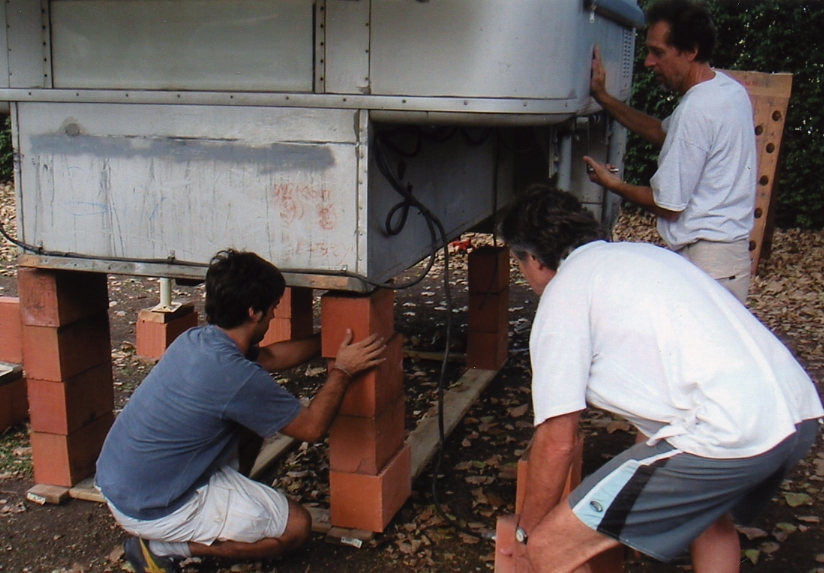
I love that readers ask me “what happened to YOUR camper?” Here’s the lowdown, the story that didn’t make it into the book. Remember the adorable couple who pitched their tent directly underneath our camper and encouraged us to return to San Junin de los Andes?

Their families pooled resources and gave it a new home in a beachside campground in Mar de Plata. It would be a weekend getaway from Magali’s med school stress and recording studio for the musically talented Yamil.

We shipped the still-new Ford F350 back to North America and said goodbye to the much-loved Avion – hoping to inspire another generation of travelers. You, dear readers, have been part of the journey. Thank you y que le vaya bien.
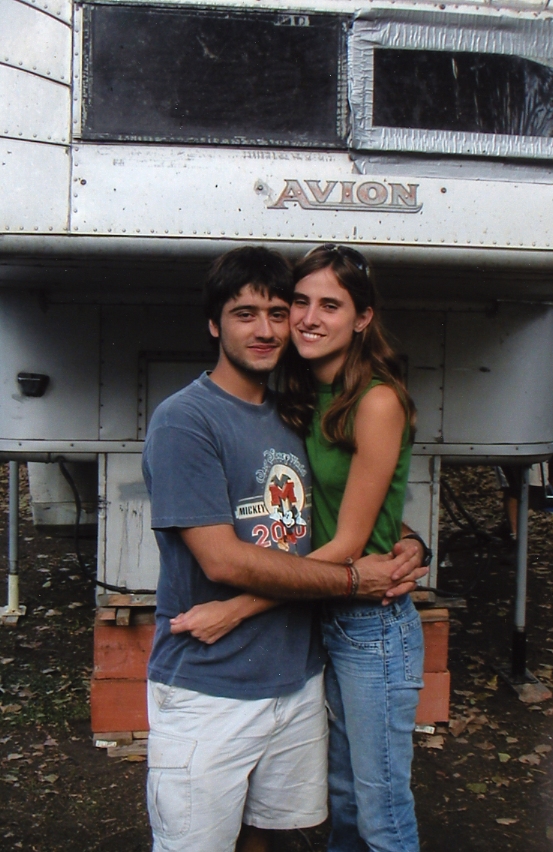
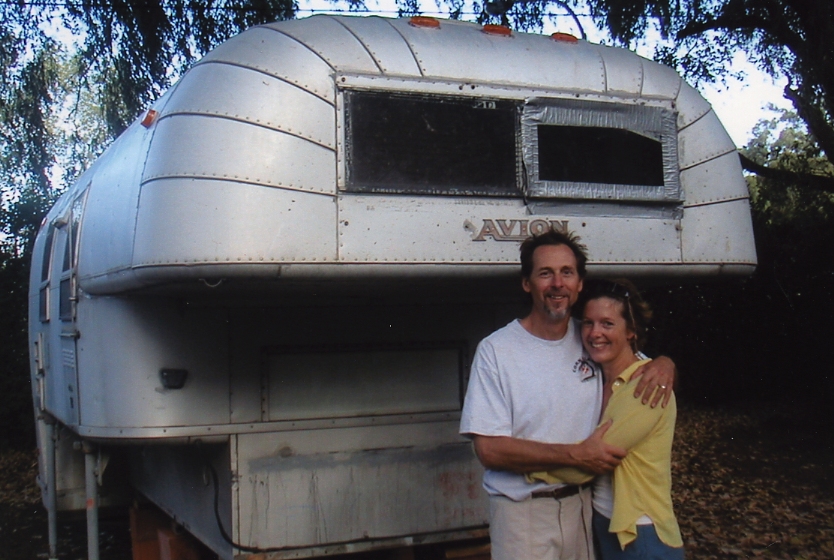
Follow this bonus-material blog and ride along on a one-year road trip that inspired the memoir The Drive: Searching for Lost Memories on the Pan American Highway. On sale now. Get yours through the buy-the-book links at the bottom of the landing page on my teresabrucebooks.com website or here or here. Planning a road trip? Buy the audiobook here. Like The Drive’s Facebook page and tweet back at me @writerteresa. Like travel anthologies? I’m in a brand new one called Alone Together: Tales of Sisterhood and Solitude in Latin America which you can get here.
Buenos Aires (Feb 27th)
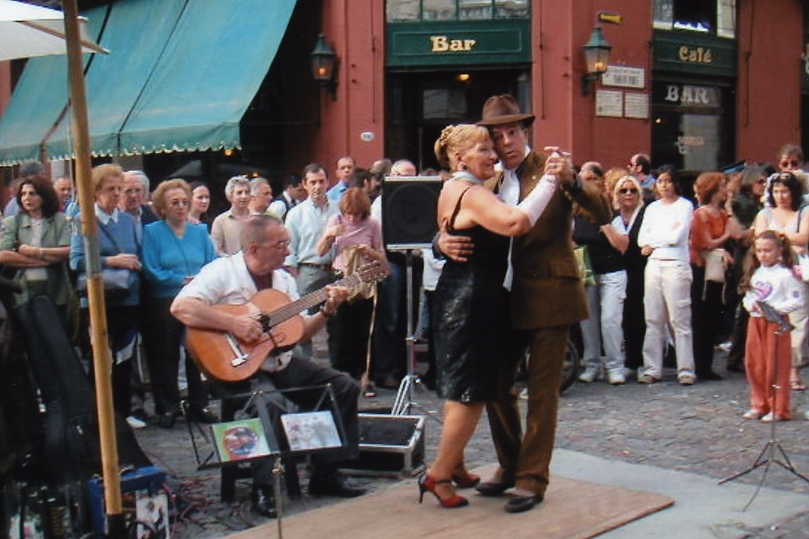
The truth is I never left you. I still dream of Argentina. Especially Buenos Aires. And yes, the song is correct. Every word is true. You will love it. You should go. Even if you never intend to tango.
 We rented a studio apartment for the month it took to arrange passage back to North America. It was so small I slept in a drawer that trundled out from under a futon. And I would return in a heartbeat.
We rented a studio apartment for the month it took to arrange passage back to North America. It was so small I slept in a drawer that trundled out from under a futon. And I would return in a heartbeat.

I will name my next camper after anyone who gets “The Drive: Searching for Lost Memories on the Pan-American Highway” published in Spanish. Why? So I can take the book to the most important annual literary event in the Spanish speaking world: the Buenos Aires Book Fair.
Follow this bonus-material blog and ride along on a one-year road trip that inspired the memoir The Drive: Searching for Lost Memories on the Pan American Highway. On sale now. Get yours through the buy-the-book links at the bottom of the landing page on my teresabrucebooks.com website or here or here. Planning a road trip? Buy the audiobook here. Like The Drive’s Facebook page and tweet back at me @writerteresa. Like travel anthologies? I’m in a brand new one called Alone Together: Tales of Sisterhood and Solitude in Latin America which you can get here. And you can find a laugh below — Buenos Aires street humor.

A dispatch from Chile (Feb 26)
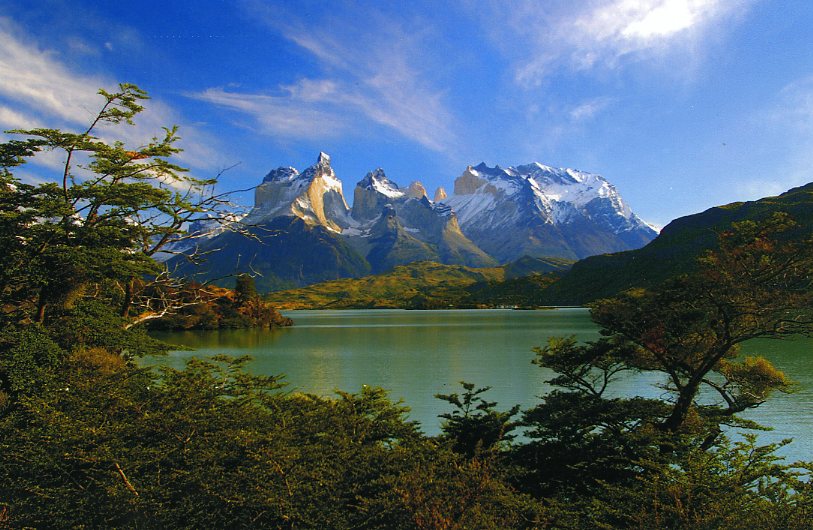
The drive down the length of the Pan-American highway is technically over; the book ends here. But we still need to return to reality and begin the trip home. Which takes us another few months and could well fill another book. So consider these next few days bonus material –reward for coming along on this virtual road trip.

We dart in and out of Chile only as long as our budget allows: in 2004 it is not in the throes of economic collapse like its neighbor Argentina and so we cannot spend the time it deserves to explore.
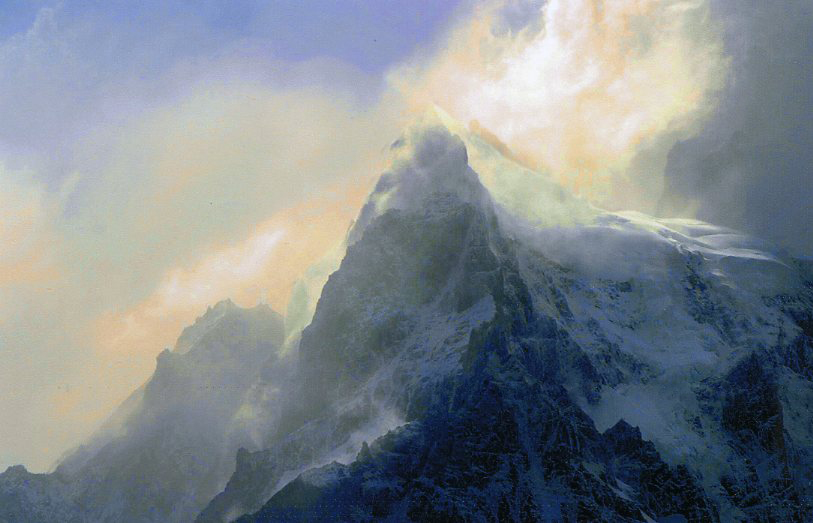
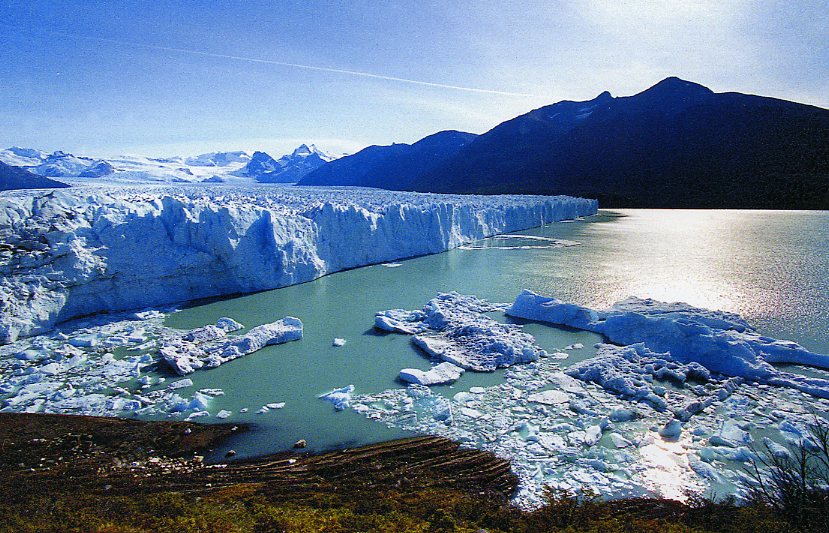
We pick the can’t miss highlights – Torres del Paine and the Perito Moreno Glacier – leaving the day before the natural ice bridge collapses.

I stop making journal entries. Photographs offer an homage instead, and an enticement to support groups like the Pew Charitable Trusts working to preserve it.
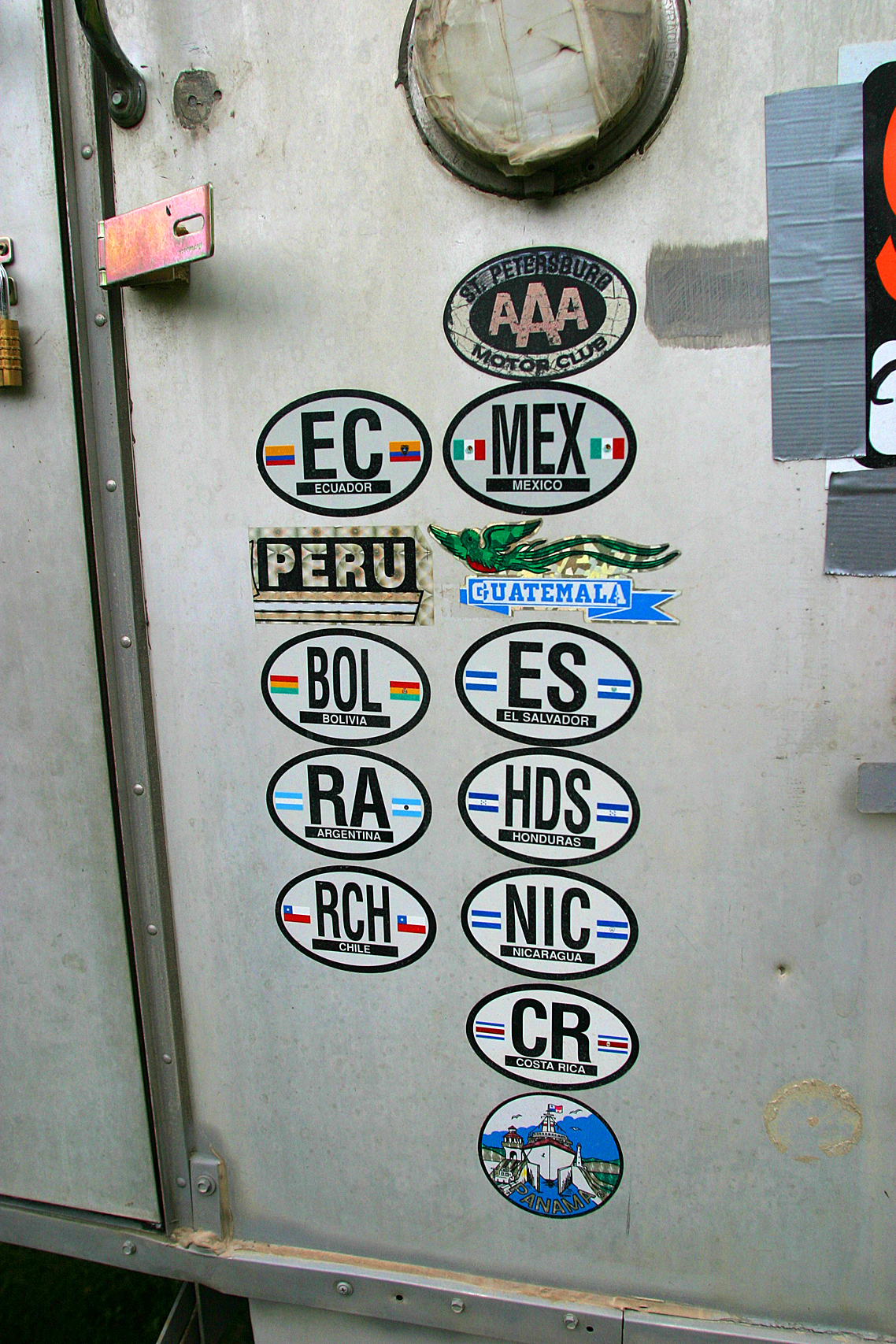
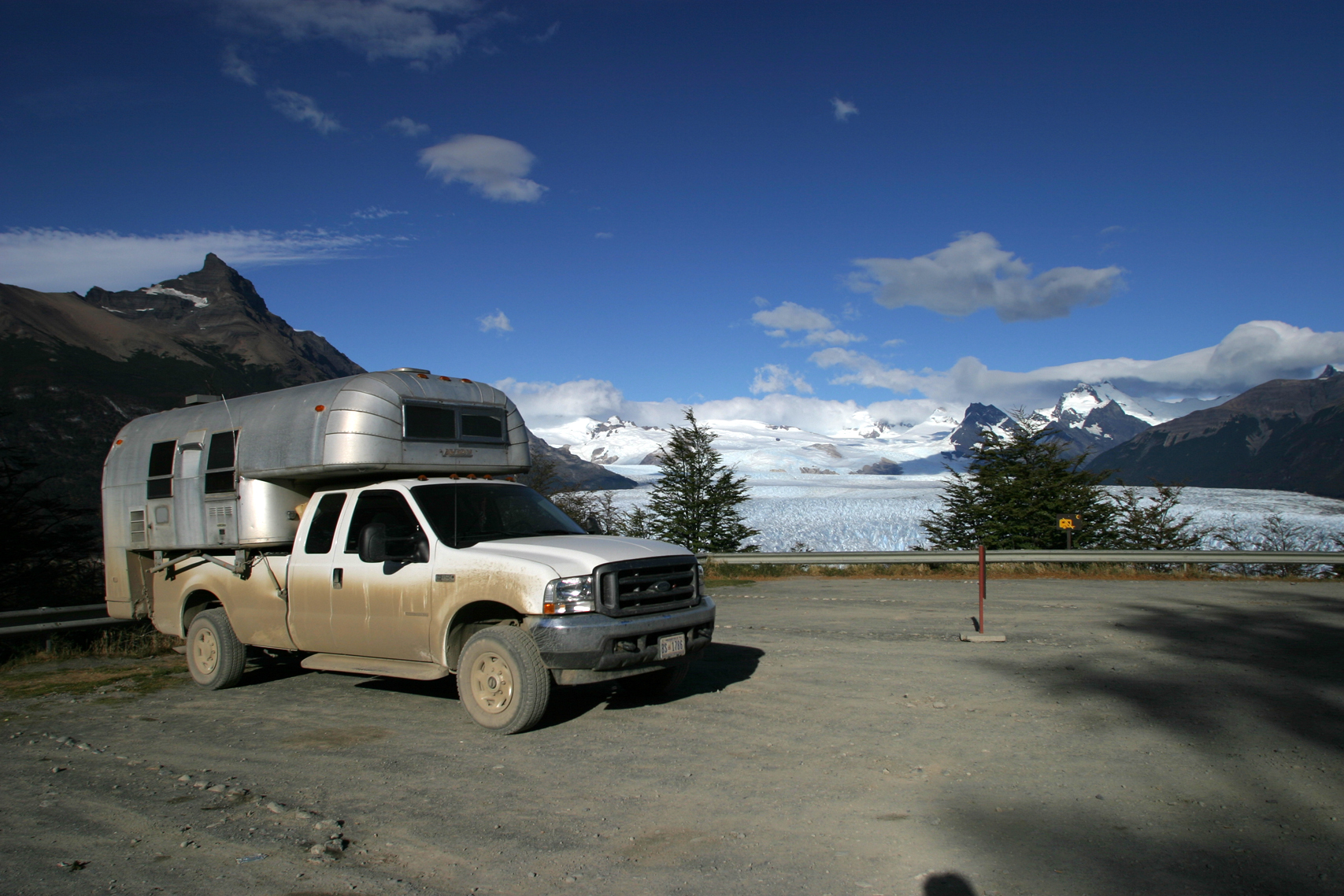
Follow this bonus-material blog and ride along on a one-year road trip that inspired the memoir The Drive: Searching for Lost Memories on the Pan American Highway. On sale now. Get yours through the buy-the-book links at the bottom of the landing page on my teresabrucebooks.com website or here or here. Planning a road trip? Buy the audiobook here. Like The Drive’s Facebook page and tweet back at me @writerteresa. Like travel anthologies? I’m in a brand new one called Alone Together: Tales of Sisterhood and Solitude in Latin America which you can get here.
End of the road (Drive day 241: Feb 25th, 2004)

I want to carve initials into the sign marking the end of the Pan-American – my parents’ initials, not mine. We have finished the journey for them and I am composing the afterword for a book I know will come.

“I had no idea the end of the world could begin so gently and sweet smelling. The sky and the land relinquish their rigid boundaries and melt into liquid and cloudy horizons. ..
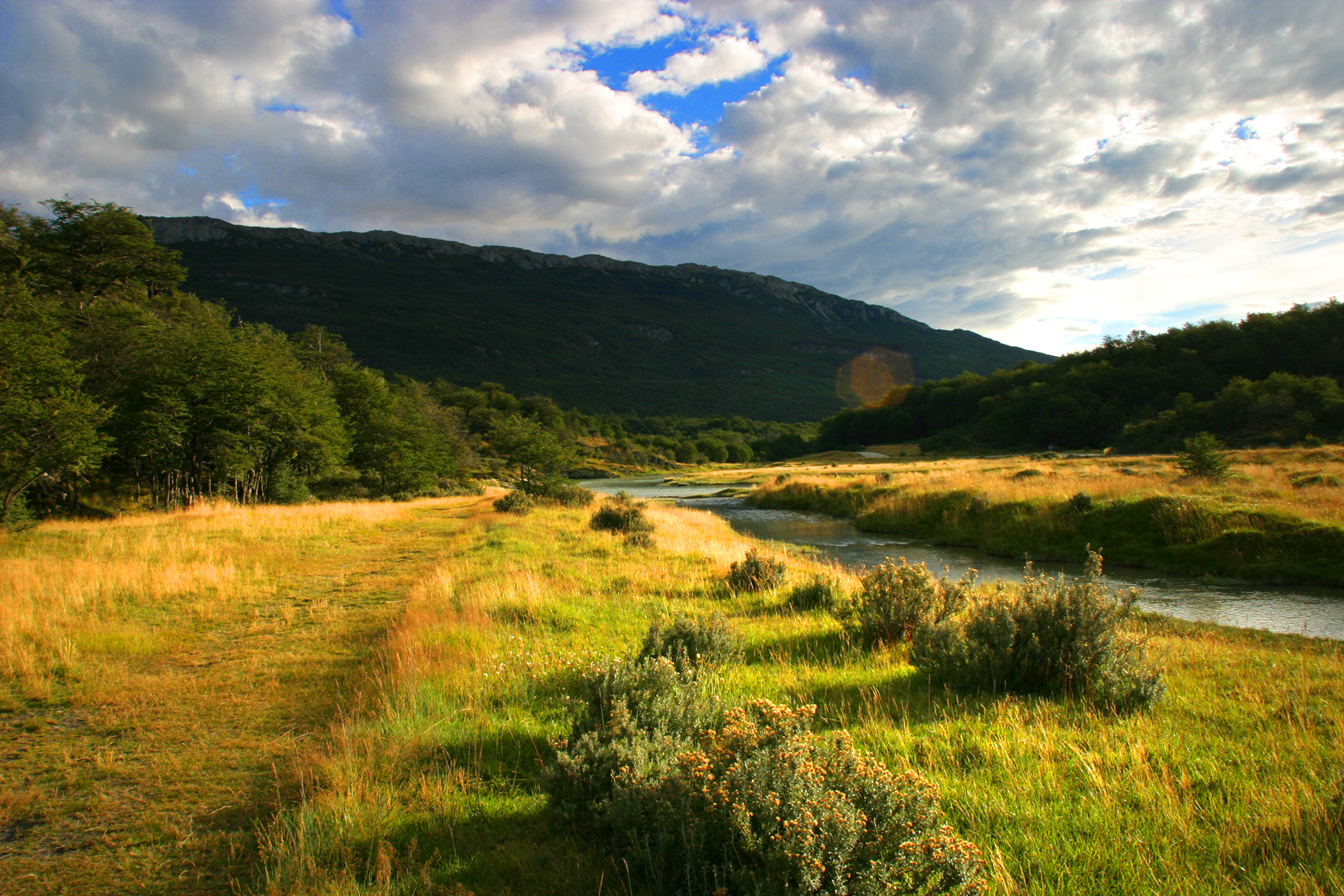
The colors whisper and blend into soothing half-tones and glows. The breeze stirs clover and salt and mussels and rain into something like a sigh. It is a place where even dreams can rest.”

Follow this bonus-material blog and ride along on a one-year road trip that inspired the memoir The Drive: Searching for Lost Memories on the Pan American Highway. On sale now. Get yours through the buy-the-book links at the bottom of the landing page on my teresabrucebooks.com website or here or here. Planning a road trip? Buy the audiobook here. Like The Drive’s Facebook page and tweet back at me @writerteresa. Like travel anthologies? I’m in a brand new one called Alone Together: Tales of Sisterhood and Solitude in Latin America which you can get here.




